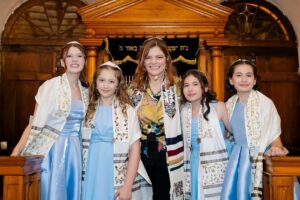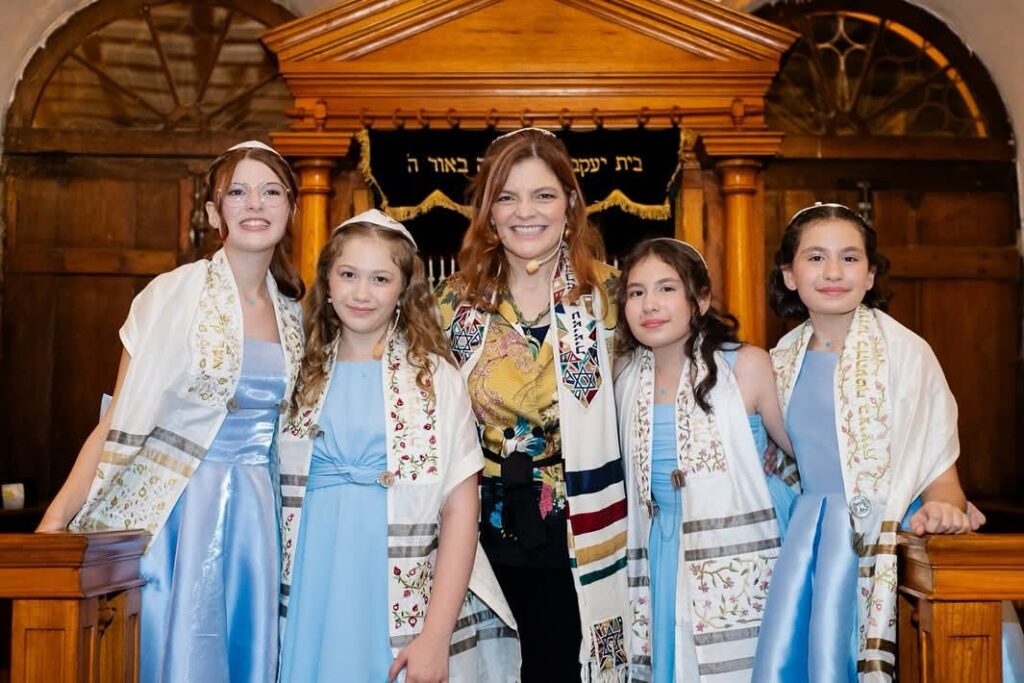Text written by Rabbi Kelita Cohen
One of the greatest joys that the rabbinate brings me is being part of people’s lives during their most meaningful moments. That’s how I became close to the story of four young girls from Recife and their families — four young women deeply rooted in tradition, yet determined to write their own futures.
They share many similarities, but also a wealth of unique qualities. Though Clara and Sofia may look alike physically, their personalities are quite different. Sofia shows a more rational and proactive side, while Clara stands out for her emotional depth — the heart she brings into every experience.
On the other hand, cousins Bia and Clara, despite sharing the same last name, represent entirely individual journeys. Though very different in appearance, both are committed to embracing responsibility for their Jewish lives — each in her own way. Clara has always been involved in Jewish life; Bia, meanwhile, wants to mark this new chapter as a turning point — a starting place to fully claim her tradition.
The four of them spent a year learning with morá Ida, sharing doubts and achievements, while strengthening their bonds. It was a journey of partnership and mutual growth. Each of them chose to wear a tallit and tefillin during her Bat Mitzvah ceremony, each moved by her own heart and personal motivation. Among the Schor girls, Sofia saw tefillin as a way to claim space as a woman in a tradition that, for her, still carries inequality; while Clara embraced tefillin as an act of sorority — a path shared with others.
Among the Katz girls, Bia chose to wear tefillin as a symbol of resistance and equality, after noticing how few videos showed women participating in that ritual. Clara, in turn, honors with her tefillin the path begun by her grandfather Fred and continued by her grandmother Silvia’s involvement in the restoration of the Kahal — a place of ancestry and continuity, where the ceremony took place — sharing, through her own body, her family’s story.
In this way, each of these four young women took an important step in shaping their Jewish identity. They didn’t simply receive a tradition — they began to share it, renew it, and give it new meaning. The journey of Clara, Sofia, Bia, and Clara shows that Judaism is alive, dynamic, and adaptable to the hands of each new generation. And in making their own choices, they share in a common story — the story of a people that grows stronger precisely through the hands of its daughters.
It is by accompanying these journeys that I, too, continue building my own story as a rabbi. Because by supporting each of them in finding their unique expression within Judaism, I am weaving, alongside the communities I serve, a shared memory. A memory where tradition and renewal walk hand in hand, and where my own path grows stronger by being part of so many new beginnings.





